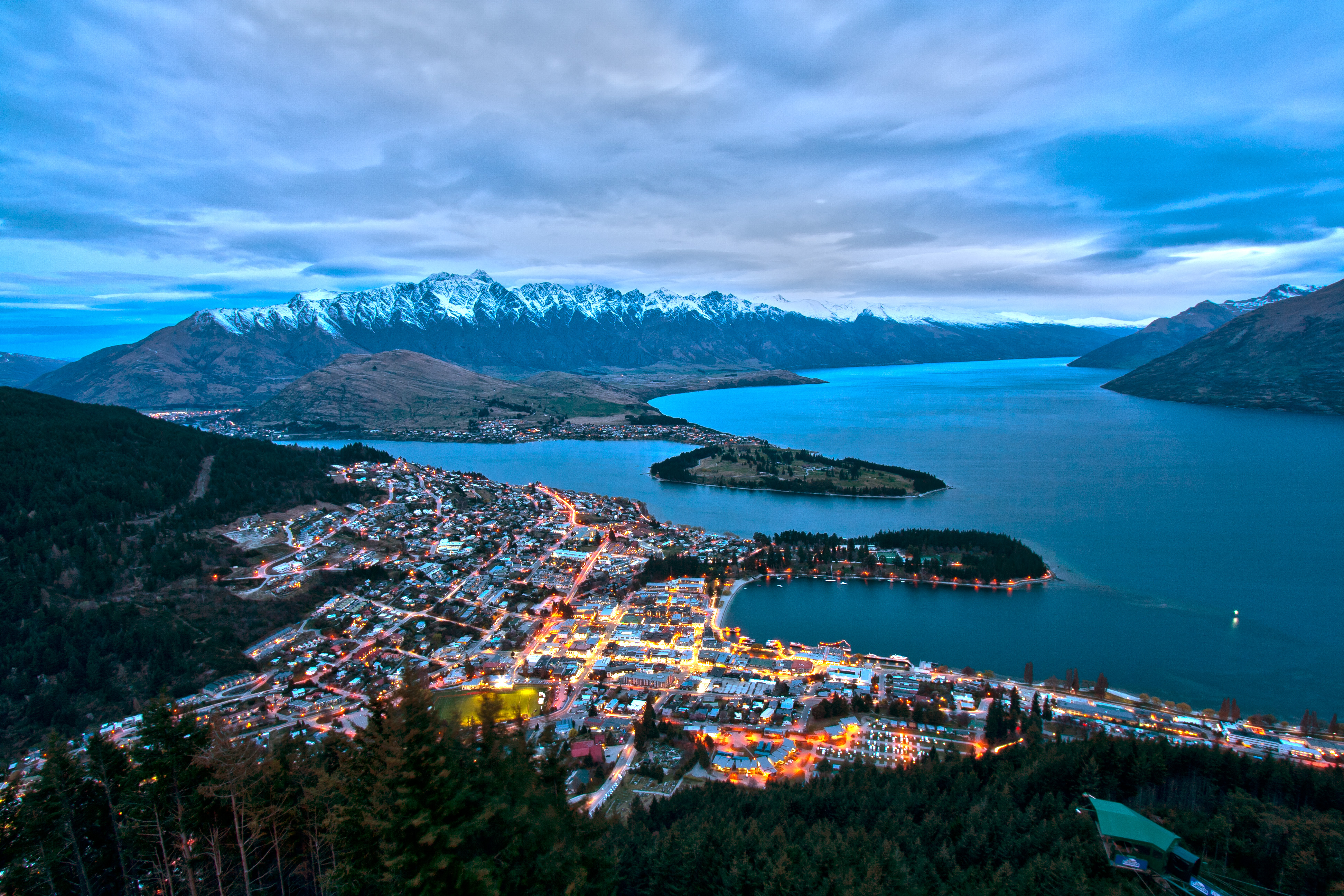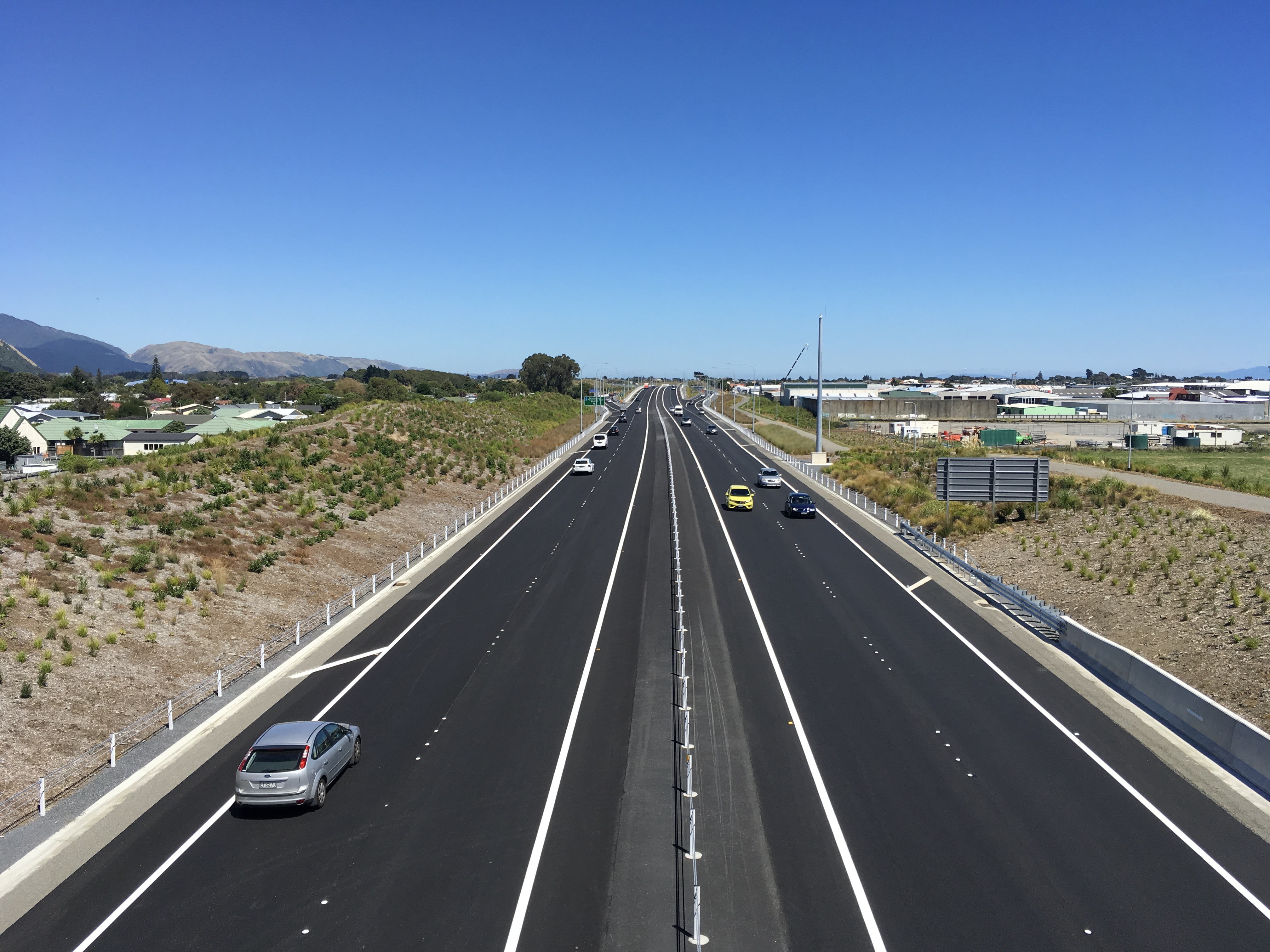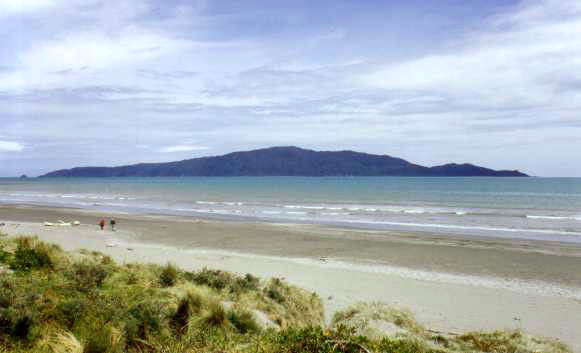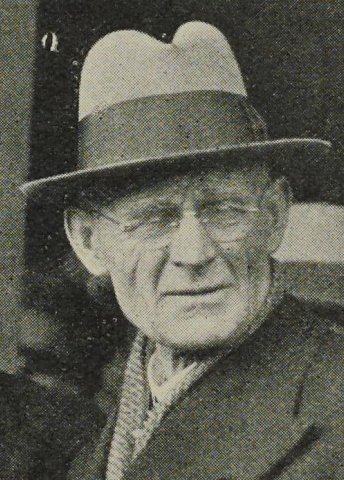|
Ngā Manu Nature Reserve
Ngā Manu Nature Reserve is a nature and wildlife reserve in Waikanae, New Zealand, on the Kāpiti Coast of the North Island. In addition to offering a sanctuary for native birds and other animals, the reserve preserves the largest remnant of coastal lowland swamp forest on the Kāpiti Coast. Ngā Manu contains aviaries housing native birds such as kākā, kākāriki, scaup, whio and kea, enclosures with tuatara, and a nocturnal house with kiwi and morepork. Bird life in the reserve comprises up to 60 different bird species, the most visible being common local birds such as kererū, tūī, black swan, paradise duck and pūkeko. The reserve is not surrounded by a pest-exclusion fence, and as a result the native bush area of the reserve does not host any critically endangered animals, however, Ngā Manu is regularly involved in wider conservation efforts and breeding programmes. History Ngā Manu has been managed by the charitable Ngā Manu Trust since 1974 and opene ... [...More Info...] [...Related Items...] OR: [Wikipedia] [Google] [Baidu] |
Tūī
The tūī (''Prosthemadera novaeseelandiae'') is a boisterous medium-sized bird native to New Zealand. It is blue, green, and bronze colored with a distinctive white throat tuft. It is an endemic passerine bird of New Zealand, and the only species in the genus ''Prosthemadera''. It is one of the largest species in the diverse Australasian honeyeater family Meliphagidae, and one of two living species of that family found in New Zealand, the other being the New Zealand bellbird (''Anthornis melanura''). The tūī has a wide distribution in the archipelago, ranging from the subtropical Kermadec Islands to the sub-Antarctic Auckland Islands, as well as the main islands. Taxonomy The bird's name comes from the Māori language. The plural is ''tūī'' in modern New Zealand English, or ''ngā tūī'' in Māori usage; some speakers still use the '-s' suffix to produce the Anglicised form ''tūīs'' to indicate plurality, but this practice is becoming less common. For many years the ... [...More Info...] [...Related Items...] OR: [Wikipedia] [Google] [Baidu] |
Nature Reserves In New Zealand
Nature, in the broadest sense, is the physical world or universe. "Nature" can refer to the phenomena of the physical world, and also to life in general. The study of nature is a large, if not the only, part of science. Although humans are part of nature, human activity is often understood as a separate category from other natural phenomena. The word ''nature'' is borrowed from the Old French ''nature'' and is derived from the Latin word ''natura'', or "essential qualities, innate disposition", and in ancient times, literally meant "birth". In ancient philosophy, ''natura'' is mostly used as the Latin translation of the Greek word ''physis'' (φύσις), which originally related to the intrinsic characteristics of plants, animals, and other features of the world to develop of their own accord. The concept of nature as a whole, the physical universe, is one of several expansions of the original notion; it began with certain core applications of the word φύσις by pre-Socr ... [...More Info...] [...Related Items...] OR: [Wikipedia] [Google] [Baidu] |
Tourism New Zealand
Tourism New Zealand is the marketing agency responsible for promoting New Zealand as a tourism destination internationally. It is the trading name of the New Zealand Tourism Board, a Crown entity A Crown entity (from the Commonwealth term ''Crown'') is an organisation that forms part of New Zealand's state sector established under the Crown Entities Act 2004, a unique umbrella governance and accountability statute. The Crown Entities Act i ... established under the New Zealand Tourism Board Act 1991. The Ministry of Business, Innovation and Employment; (previously the New Zealand Ministry of Tourism) is the government department tasked with tourism policy and research. History New Zealand was the first country to dedicate a government department to tourism. In 1901, the Department of Tourist and Health Resorts came into being. Through most of the 20th century, its role was tactical - running hotels and putting together itineraries around New Zealand as well as advertising. T ... [...More Info...] [...Related Items...] OR: [Wikipedia] [Google] [Baidu] |
Arboretum
An arboretum (plural: arboreta) in a general sense is a botanical collection composed exclusively of trees of a variety of species. Originally mostly created as a section in a larger garden or park for specimens of mostly non-local species, many modern arboreta are in botanical gardens as living collections of woody plants and is intended at least in part for scientific study. In Latin, an ''arboretum'' is a place planted with trees, not necessarily in this specific sense, and "arboretum" as an English word is first recorded used by John Claudius Loudon in 1833 in ''The Gardener's Magazine'', but the concept was already long-established by then. An arboretum specializing in growing conifers is known as a pinetum. Other specialist arboreta include saliceta (willows), populeta (Populus, poplar), and querceta (oaks). Related collections include a fruticetum, from the Latin ''frutex'', meaning ''shrub'', much more often a shrubbery, and a viticetum (from the Latin ''vitis,'' meani ... [...More Info...] [...Related Items...] OR: [Wikipedia] [Google] [Baidu] |
Kāpiti Expressway
The Kāpiti Expressway is a four-lane grade-separated expressway on New Zealand's State Highway 1 route through the Kāpiti Coast north of Wellington. From the northernmost terminus of the Transmission Gully Motorway at Mackays Crossing just north of Paekākāriki, it extends northwards to just north of Ōtaki, bypassing the former two-lane route through Raumati South, Paraparaumu, Waikanae, Peka Peka, Te Horo and Ōtaki. Names Waka Kotahi web site name the first section (finished 2017) as McKays to Peka Peka (M2PP) and the second section (finished 2022) as Peka Peka to Ōtaki (PP2Ō). These appear as project names and in all material provided publicly. These documents do not use the name Kāpiti Expressway. Signage in the vicinity of the Expressway shows "EWY North (or South)" and a list of destinations, "expressway" at the start of on ramps, or "expressway ends" an the end of off ramps. The word Kāpiti does not appear in any of this signage. The name Kāpiti Ex ... [...More Info...] [...Related Items...] OR: [Wikipedia] [Google] [Baidu] |
Tararua Range
The Tararua Range, often referred to as the Tararua Ranges or Tararua, is one of several mountain ranges in the North Island of New Zealand. The Tararua Range runs northeast–southwest for from near Palmerston North to the upper reaches of the Hutt Valley, where the northern tip of the Remutaka Range begins. It is separated in the north from the southern end of the Ruahine Range by the Manawatu Gorge. Most of the Range is wilderness, protected as the Tararua Forest Park. The highest peak in the Tararua Range is Pukeamoamo / Mitre (not to be confused with Mitre Peak) at . Other prominent peaks include Mount Bannister at and Mount Hector at , which is named after the scientist Sir James Hector. Its Māori name is Pukemoumou, or 'hill of desolation'. Geography The Tararua Range is divided into two distinct northern and southern regions. Each of these is dominated by a central mountain peak: Arete in the north and Hector in the south. A total of ten rivers rise on the ... [...More Info...] [...Related Items...] OR: [Wikipedia] [Google] [Baidu] |
Kapiti Island
Kapiti Island () is an island about off the west coast of the lower North Island of New Zealand. It is long, running southwest/northeast, and roughly wide, being more or less rectangular in shape, and has an area of . Its name has been used since 1989 by the Kapiti Coast District Council, which includes towns such as Paekakariki, Raumati South, Paraparaumu and Waikanae. The island is separated from the North Island by the Rauoterangi Channel. The highest point on the island is Tūteremoana, . The seaward (west) side of the island is particularly rocky and has high cliffs, some hundreds of metres high, that drop straight into the sea. The cliffs are subject to very strong prevailing westerly winds and the scrubby vegetation that grows there is low and stunted by the harsh environmental conditions. A cross-section of the island would show almost a right-angled triangle, revealing its origins from lying on a fault line (part of the same ridge as the Tararua Range). The island's ... [...More Info...] [...Related Items...] OR: [Wikipedia] [Google] [Baidu] |
Charles Fleming (ornithologist)
Sir Charles Alexander Fleming (9 September 1916 – 11 September 1987) was a New Zealand geologist, ornithologist, molluscan palaeontologist and environmentalist. He spent the last twenty years of his life studying the evolution and systematics of New Zealand cicadas. Fleming graduated from the University of Auckland in 1952 with a doctoral thesis on the geology of Whanganui. He was active in the Save Manapouri Campaign, was a spokesperson for Native Forest Action Council and the Royal Forest and Bird Protection Society of New Zealand. He was elected to the American Philosophical Society in 1973. In 1974 he was elected a Fellow of the Royal Australasian Ornithologists Union. In 1988 the Royal Society of New Zealand established the Charles Fleming Award which is awarded to individuals who have achieved distinction in the protection, maintenance, management, improvement, or understanding of the environment. In 1997, Trevor H. Worthy commemorated Charles Fleming in th ... [...More Info...] [...Related Items...] OR: [Wikipedia] [Google] [Baidu] |
John McKenzie (philanthropist)
Sir John Robert Hugh McKenzie (5 August 1876 – 26 August 1955) was a New Zealand businessman and philanthropist. He was born in Yarrawalla, Victoria, Australia, on 5 August 1876. In the 1950 New Year Honours, he was appointed a Knight Commander of the Order of the British Empire for public and philanthropic services. In 1996, McKenzie was posthumously inducted into the New Zealand Business Hall of Fame The New Zealand Business Hall of Fame is a figurative hall of fame dedicated to New Zealanders who have made a significant contribution to the economic and social development of New Zealand. The hall was established in 1994 by the Young Enterpri .... References 1876 births 1955 deaths New Zealand businesspeople Place of death missing People from Victoria (Australia) Australian emigrants to New Zealand New Zealand Knights Commander of the Order of the British Empire New Zealand philanthropists {{NewZealand-business-bio-stub ... [...More Info...] [...Related Items...] OR: [Wikipedia] [Google] [Baidu] |
Peter McKenzie (conservationist)
Peter Howard McKenzie (10 September 1952 – 15 April 2012) was a New Zealand conservationist and founder of the Ngā Manu Nature Reserve in Waikanae, New Zealand. Biography Born in Wellington in 1952, McKenzie was the son of philanthropist Sir Roy McKenzie and grandson of the founder of the McKenzie's retail chain Sir John McKenzie. He was educated at Nelson College from 1966 to 1969,''Nelson College Old Boys' Register, 1856–2006'', 6th edition where his interest in native plants was encouraged through spending time at the school's outdoor education centre, Mataki Lodge, near Murchison. In 1974 McKenzie formed Ngā Manu Trust and in 1978 the trust first leased and later bought the current site of Ngā Manu Nature Reserve in Waikanae. In the mid 1970s McKenzie was instrumental in kiwi captive breeding programmes and he was involved with the tuatara recovery programme for over 20 years. In 2009, after three years of work, McKenzie captured footage of a puriri moth hatc ... [...More Info...] [...Related Items...] OR: [Wikipedia] [Google] [Baidu] |
Pūkeko
The Australasian swamphen (''Porphyrio melanotus'') is a species of swamphen (''Porphyrio'') occurring in eastern Indonesia (the Moluccas, Aru and Kai Islands), Papua New Guinea, Australia and New Zealand. In New Zealand, it is known as the pukeko (from the Māori ). The species used to be considered a subspecies of the purple swamphen. Distribution The Australasian swamphen occurs in mainland Australia, eastern Indonesia, the Moluccas, Aru and Kai Islands, and in Papua New Guinea. It is also found on New Zealand's main islands and in the Chatham and Kermadec Islands. It has a small shield, black upperparts, and a purple throat and breast. ''P. p. pelewensis'' (Hartlaub & Finsch, 1872) from Palau, resembles ''melanotus'' but has greener upperparts and is smaller. ''P. p. melanopterus'' (Bonaparte, 1856) is found from the Lesser Sundas and Moluccas to New Guinea. It is as ''melanotus'' but smaller, more variable and less blue in the upperparts. ''P. p. bellus'' (Gould, 1820) ... [...More Info...] [...Related Items...] OR: [Wikipedia] [Google] [Baidu] |
.jpg)
.jpg)






